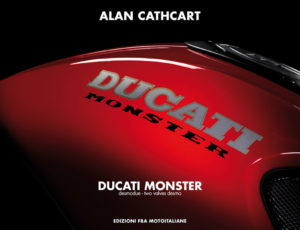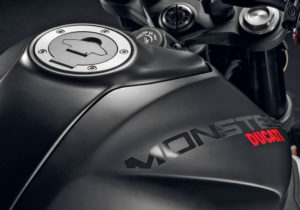The first part of the monster’s history was written by Stefano Ferrigno in 2008, the most recent models were inserted by the editorial staff of cuoredesmo.com in the second part of the article.
In many respects, the period spent under the auspices of Cagiva is remembered by ducatisti as one of the most troubled and it can certainly be recognized that much of the bad reputation of Bolognese motorcycles in terms of reliability and quality derives strictly precisely from the choices made in those years. In the same way, however, it cannot be forgotten that just at that moment in the history of the Casa di Borgo Panigale a whole series of real two-wheeled
[the_ad id=”4234″]
Content Index
Ducati Monster: a successful project
It is precisely the Monster the most successful Ducati model of all time: initially born under the form of a rude supersports stripped of every hem, over the years it has been declined in a boundless series of versions, from the quiet and essential 400, the fulcrum of the Japanese market, up to the incredible and excessive versions “Testastretta”. From 40 to 130 and more horses, therefore, this motorcycle has remained almost unchanged for about 15years – a real record when you consider the average life of any model nowadays. Thanks to the essential and timeless lines, the large and gibbous tank or the evocative round lighthouse? Who knows.
As legend has it, it was a Bolognese worker who bore the guessed name which, despite what is thought, is not of English root, but emilian: ” But it is just amonster!“
Nothing more suitable to say at the sight of the first crude prototype of 1992. Miguel Galluzzi had an easy life in creating a motion devoid of the unnecessary and just as sagacity in tracing the contours of that amazing tank which still represents the essential node of the Monster line (so much so that over the years its almost unchanged lines have been maintained and never any trainer has dreamed of radically distorting its volumes).
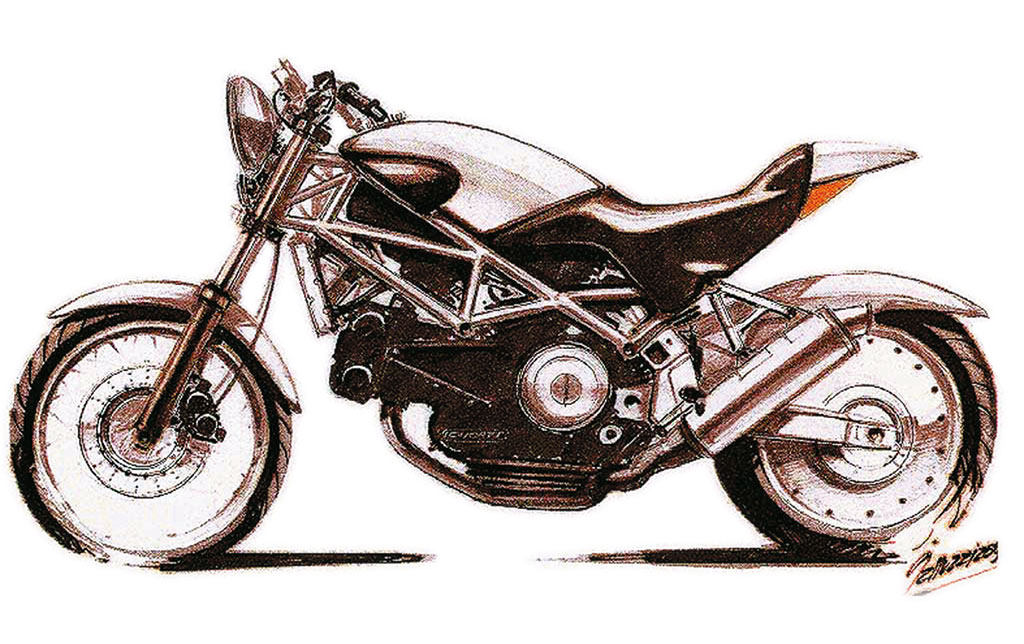
The Monster 900
The initial idea, at a time when the ideal of bare motion was somewhat in decline, was to propose a real Ducati sports car without any superstructure, but equally full of character: this imposed the use of the ”
However, the SS’s high belt frame, once stripped of the fairing, was not particularly nice to see and would also overburden the back of the bike. The result would have been quite different if, as a starting point, the 851-888series’s descending tingle frame had been used, decidedly leaner and grittier in form.
From the cycling point of view, however, there was the not insignificant difference in the presence, on the latter structure, ofthe progressive articulationof the suspension, much more attractive from an aesthetic point of view, as well as effective with regard to the performance of the suspensions.
Therefore
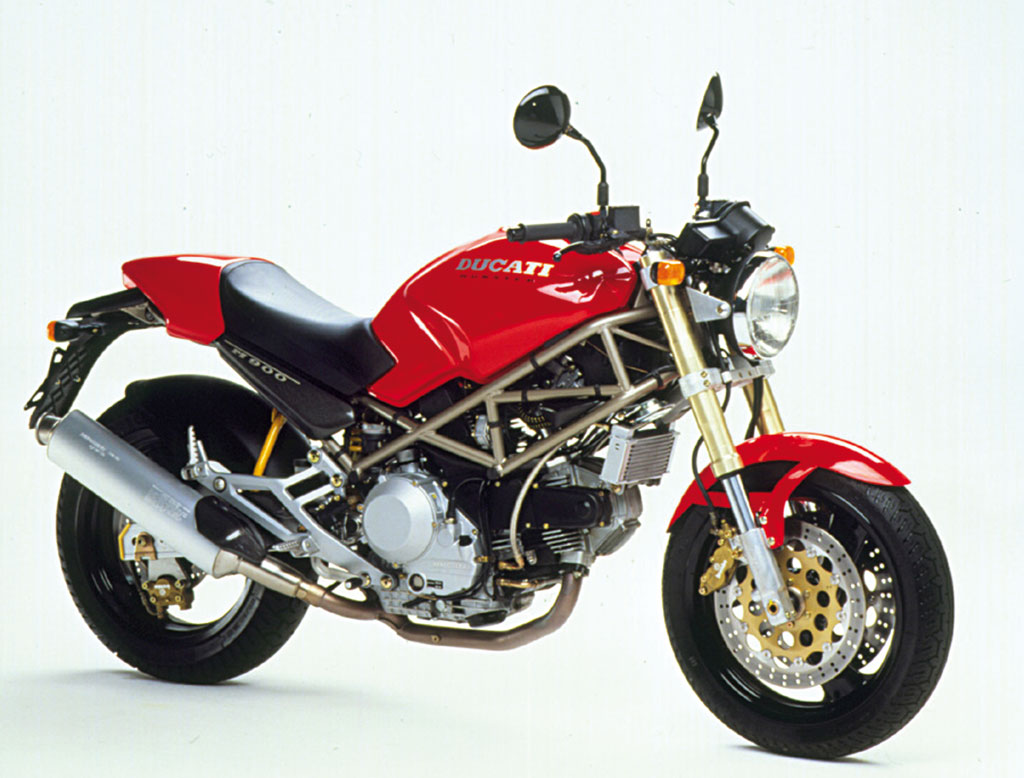
The first two years of the Monster’s life served to make the new model carburete in the hearts of enthusiasts, but it was immediately clear how high the potential of the bike itself was, going so far as to strike the imagination of non-ducatists and non-bikers.
1994: Monster 600 arrives
The reference model, in the displacement of 904 cc, was joined in 1994 by the little sister of 600 cc, characterizedby the yellow coloring and equipped with the proven 583 cc thruster, narrow pantah derivation.
To contain the purchase price, the 600 had some simplifications, starting from the single front disc of 320 mm,to the steel fork instead of aluminum, to the Marzocchi fork without adjustments and to the 5-speed gearbox. All traces of carbon fiber, replaced by simple black plastic, also disappeared, just as the heaters on the minglers were no longer provided.
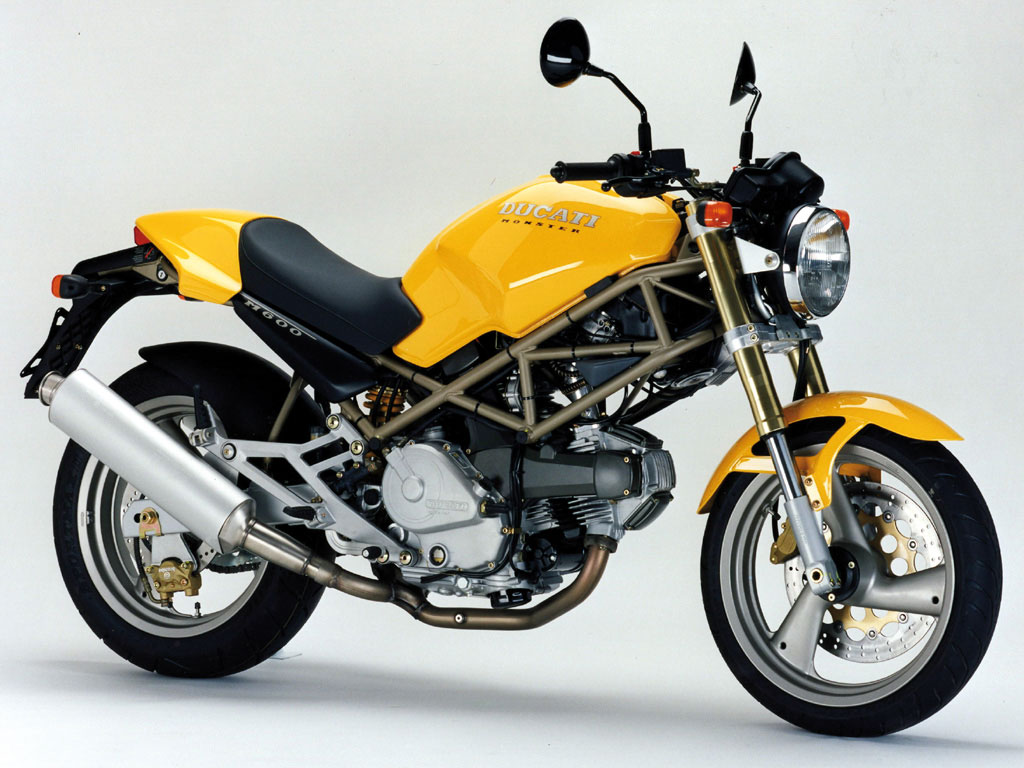
At the expense of aesthetics, but to the advantage of handling, the rear rim size was reduced by an inch compared to 5.5″ in the 900, with a 160/60-17 tire.
Among the most important modifications (also extended to the 900) there was one as banal as it was indispensable: the beveling of the silencers in the part closest to the ground. In the early examples, in fact, the high possibilities of folding often led to the exhaust system being lowered on the asphalt, which in extreme cases also caused some slips to the most daring pioneers of “monsterism”.
In 1995, the black rims and grey frame of the first versions were replaced by the evocative gold coloring that characterized the other Ducati of the period and, above all, the newborn and fascinating 916 by Tamburini.
Ducati Monster 750: it’s 1996
1996 saw the arrival of the third declination of Monster Desmodue: the 750. For a long time the least appreciated model of the series remained, the seven and a half mounted the same engine of the Super Sport series, but an endowment equivalent to that of the 600: here too, therefore, we find the single disc at the front, the non-adjustable fork, the steel swingarm, no carbon and the rear rim of 4.5″. The color associated with this engine was a beautiful metallic gray that, later, was also proposed in other displacements.
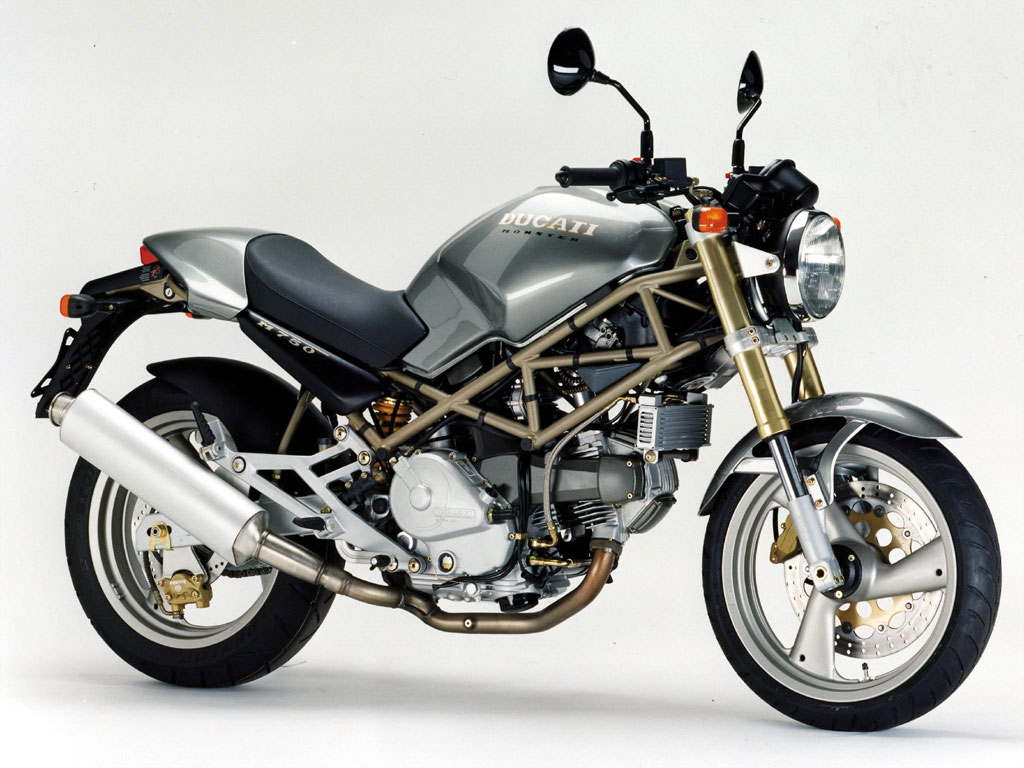
In 1997 all models uneaded only minormodifications, except for the 900 which, guilty perhaps of being too rebellious in the delivery of the torque, was made more treatable and fluid especially at low speeds with an unusual de-strengthening work.
Among enthusiasts, the 1997 900 is universally remembered as
The carburetors were modified in calibration and equipped with the heating of the trays through a derivation of the lubrication circuit.
For the first time on a monster as standard then appeared the dome, in truth a little clumsy compared to the shapes of the bike, but useful to differentiate at a glance the version of greater displacement.
1998 was the year of the first real turning point in the Monster universe,a fundamental stage in the evolution of this model and all Ducati production, thanks to the definitive exit from the Cagiva universe and the beginning of the era controlled by TPG.
The aesthetic changes concerned only a few details, such as the logos on the bodywork and the fusions of the engine, while the technical ones were substantial,with the pistons and cylinders incorporating the return ducts of the oil, until then consisting of external pipes in aeronautical braid.
The 900 Base was even more depleted, maintaining the same depowered engine as the 1997 model and eliminating all carbon parts, such as lower displacement versions. The Marzocchi fork was replaced by a 41 mm Showa used on the Super Sport, being in practice the only merit of the Base version of 1998 compared to its ancestors.
We are talking about the Base version because in the same year the ” large valve ” engine wasproposedagain on the Special model, identified by the abbreviation M900 S.
In practice, it was the standard Monster of a few years before, but enriched by the 41 mm Showa fork, the floating Brembo front discs with cast iron track, the floating rear clamp with reaction rod tied to the crankcase and a profusion of carbon fiber details, fenders included.
A special version of the 900, also proposed in 1998, was the Chromium,characterized by the chromed steel tank with embossed logos. The engine was a “small valve”, but the bike was enriched by colored black rims and all imaginable carbon fiber parts (seat cover included).
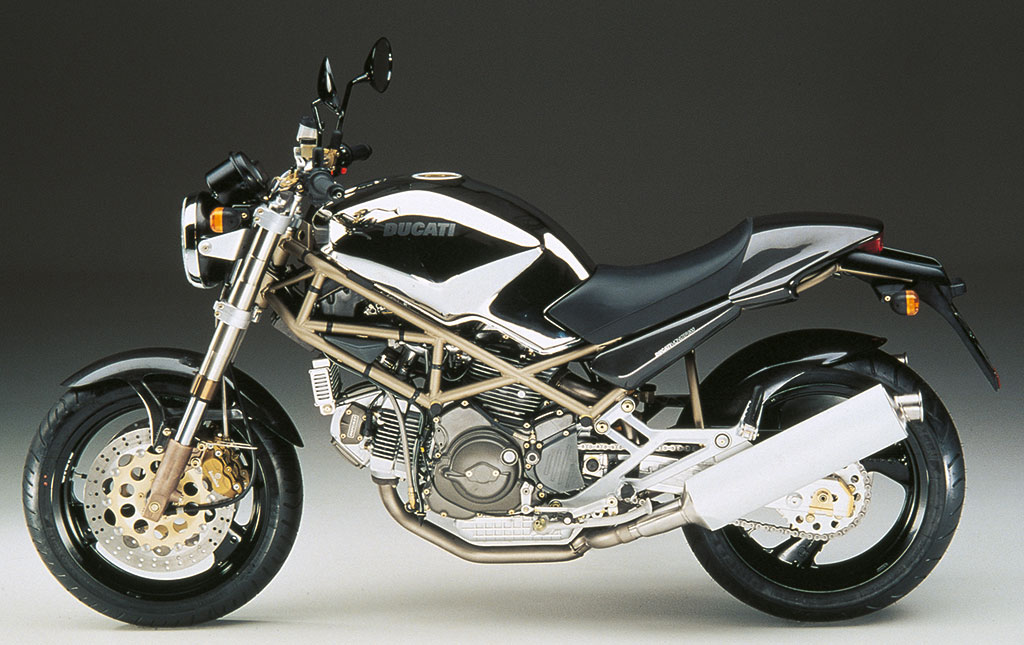
The event to be marked on the 1998 calendar, however, was undoubtedly the birth of a series of Monsters that would contribute invaluablely to the spread of the model.
The Monster Dark
Let’s talk about the Monster Dark, initially proposed only in the 600 cc variant. Characterized by the matte black coloring and the choice of various colors for the frame (black, gray, bronze, red and yellow), the Dark was proposed as an entry model, simplified to the maximum in components and fittings, as well as ready for customization.
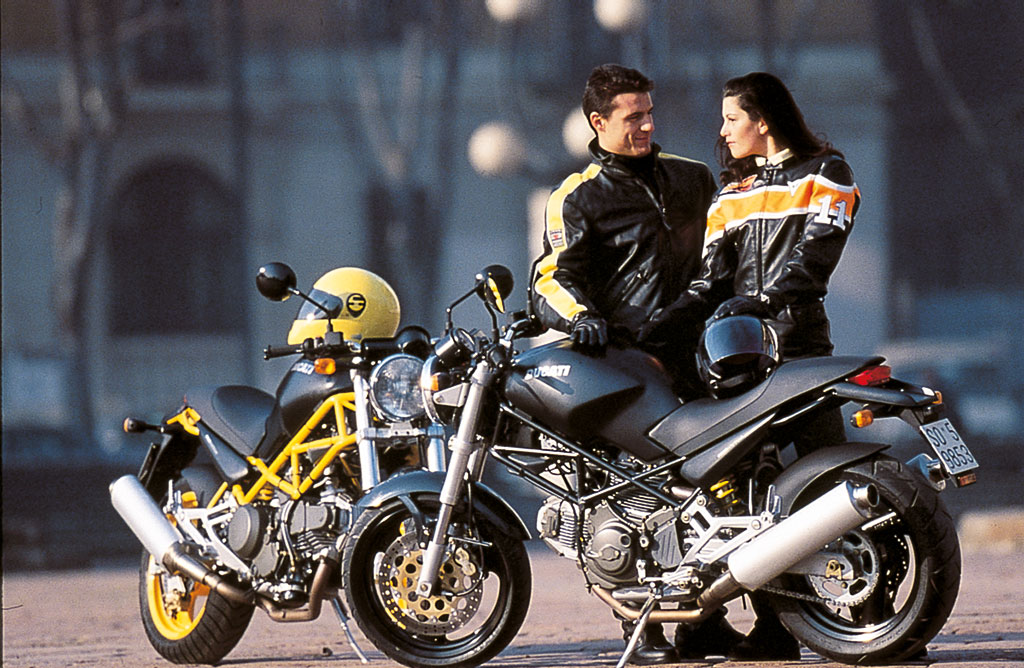
As with the 750, the engine was profoundly modified, abandoning the Pantah’s look, strongly characterized by the drip clutch carter and light alloy distribution strap covers, to resemble the 900, with the only difference, at a glance, of the presence
In the same year, the 750 was ennobled by the 900’s brakingsystem, equipped with a 320 mm double front disc and standard 16 mm pump.
The Ducati Monster City
In 1999, however, there was an unusual explosion of models, with the introduction of the City version,made with the aim of making the bike more comfortable for utilitarian use and therefore attracting additional customers. The City was equipped with a higher handlebar, aimed at a less loaded driving position, an efficient transparent dome rather extensive, a saddle more comfortable even for the possible passenger, as well as two semi-straight side bags of the Mandarin Duck.
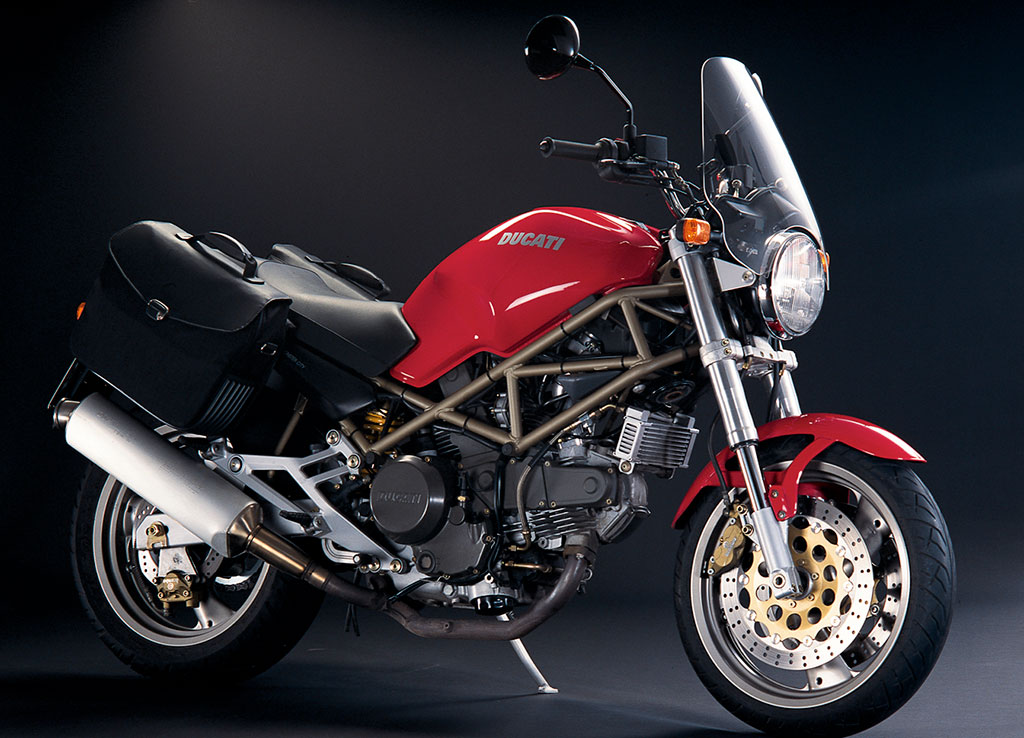
Otherwise nothing changed, being a “depowered” 900 Base, enriched among other things with more elegant colors such as metallic blue.
The City version was also proposed in the displacements of 600 and 750 cc and was also flanked by the City Dark,slightly cheaper and colored in the usual matte black.
The success of the Dark version in 1998 was such that, in 1999, the variants of 900 and 750 cc were proposed, slightly cheaper than the respective basic models, but proposed only with black chassis and bodywork, coloring that, soon, would become the standard even for the 600.
Ducati Monster 900 S
The 1999 M900 S is, to date, one of the most sought after models and without a doubt the best carburetor 904 ever built. Compared to the previous year, in fact, it was even equipped with a steering shock absorber and öhlins monoammortizer.
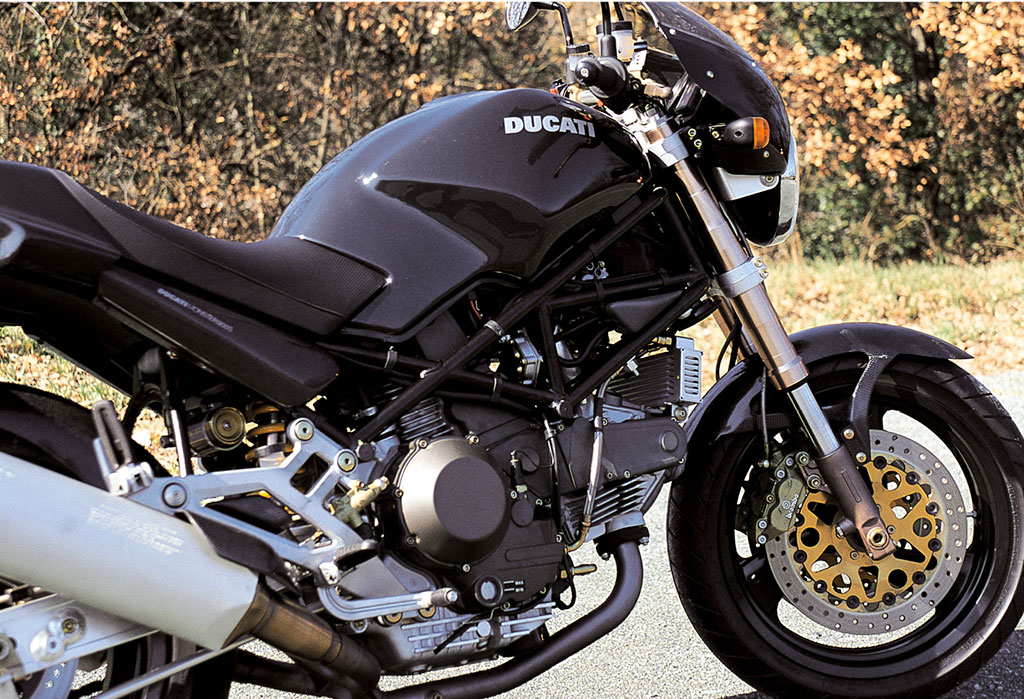
New Monster line by Terblanche
Marginal modifications also for the front fender and silencers,while the substantial variation was given by the adoption of the same engine as the coeva SS 900 ie,powered by electronic injection and equipped with “large valves” throughout the range.
The cooling was considerably stronger than the old 904 and the lubrication system was further enhanced, increasing the lubricant’s cooling capabilities with several passages and oil jets over the piston sky, along with a new larger radiator.
The 38 mm depression Mikuni carburetors were replaced by a pair of 45 mm butterfly bodies equipped with a single injector, while the 900 gearbox was replaced by that of the 748,equipped with close ratios to better enhance the Monster’s acceleration skills.
The chassis remained that of the old versions, but the front was updated by a 43 mm Showa fork, equipped witha hollow and increased wheel pin, as well as lighter rims, always with three ruffled spokes.
Starting in 2000, a non-excellent Sachs-Boge monoammozer wasuniversally adopted at the rear, with the exception of course for the Monster Special,which maintained the excellent Öhlins of 1999. Moreover, at engine level this version no longer had any superiority, which limited the differences to the equipment, enhanced for example by the aluminum swingarm, but no longer the performing floating cast iron discs. The driving position, in addition to the new saddle-tank group, was improved by a slightly higher handlebar,while the equipment was enriched by a dome much more pleasant and less bulky than the previous one as well as, finally, by a new instrumentation equipped with t-gauge.
The younger sisters borrowed most of the newly seen upgrades, although the thrusters maintainedcarburetor power, for the occasion equipped with an electric and thermostatized heating system. The only notable change was the adoption on the 600 and 750 of a new showa fork that was not adjustable,but also updated with the hollow wheel seat.
Many of the City and City-Dark models were sold only to be converted to standards by the dealers themselves, so in 2000 this version was completely suppressed, while the much-requested Dark variantremained on sale, also updated and obviously equipped with electronic injection in the 900 cc version.
Only for the 600 and 750 was introduced a special Metallic version,characterized by metallescent painting in out-of-series paint. 2001 was a year characterized by few and marginal updates:the only relevant is to be found in a new support for the rear brake caliper. The latter, which had always been a source of vibration and noise on the Monster, was repositioned above the swingarm.
It also changed the lubricant radiator along with a number of minor upgrades in the engine. That same year, the 600 and 750 borrowed the instrumentation of the 900, better equipped and complete with t-infection.
2001: Ducati presents the Monster S4
Following on from what has already been carried out by many artisan trainers, in 2001 the Casa di Borgo Panigale decided to take the big step: presenting the first 4-valve Monster in history.
Proposed as a Superbike without superstructures, in reality the bike was an ST4 transformed into Monster. The engine, in fact, was the 916 cc Desmoquattro designed for the Sport Touring and equipped with low profile exhaust side heads to limit the dimensions and advance the thruster in the frame. The latter followed the shapes of that of the ST4, apparently very similar to the usual descending traliccio, but made with increased section tubes and equipped with new progressive levers for the rear suspension, according to the pattern already seen on the 916,with adjustable reaction rod instead of the 851 style headband.
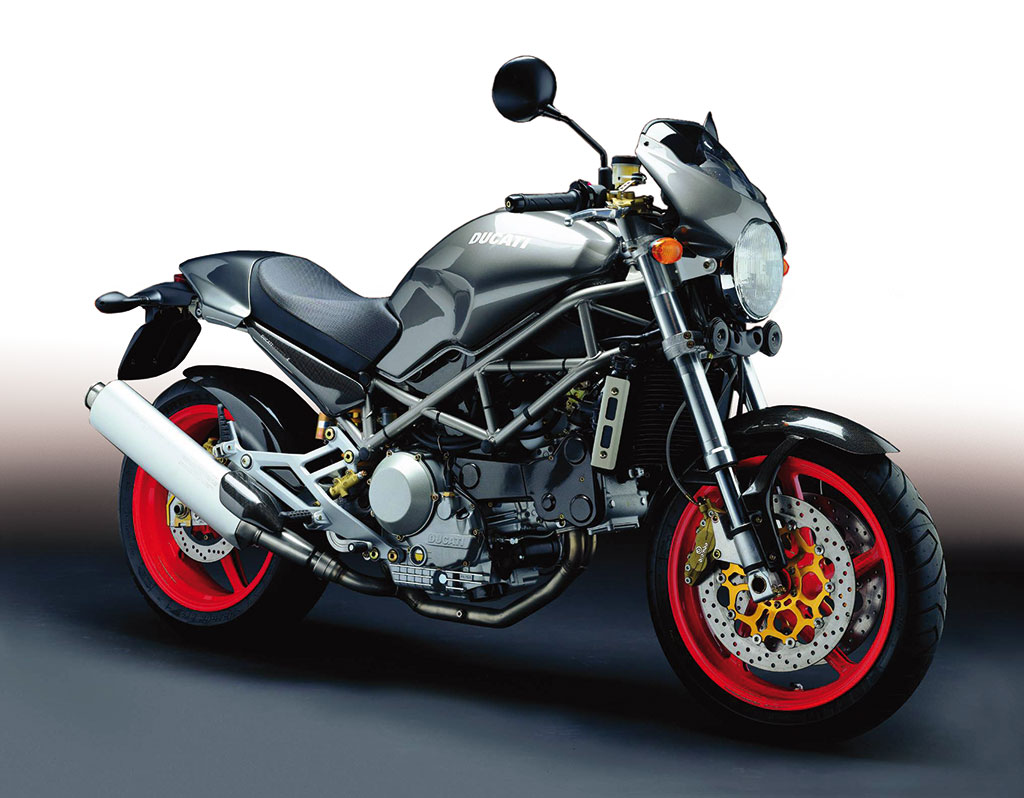
Enriched with new and lighter five-spoke rims,the S4 was also distinguished by the absence of the classic ox horn handlebar,replaced by two half-handles made by fusion. Also proposed in the intriguing Fogarty Replica version,the S4 became the new benchmark for the naked sector with its 100 Hp of power compared to the 80 poor of the 900 per injection. The second turn of the buoy for the Monster family came in 2002, with the new S4-derived chassis extended to the entire range. This allowed the adoption of a new airbox and the relocation of some accessories, as well as the different positioning (higher) of the engine.
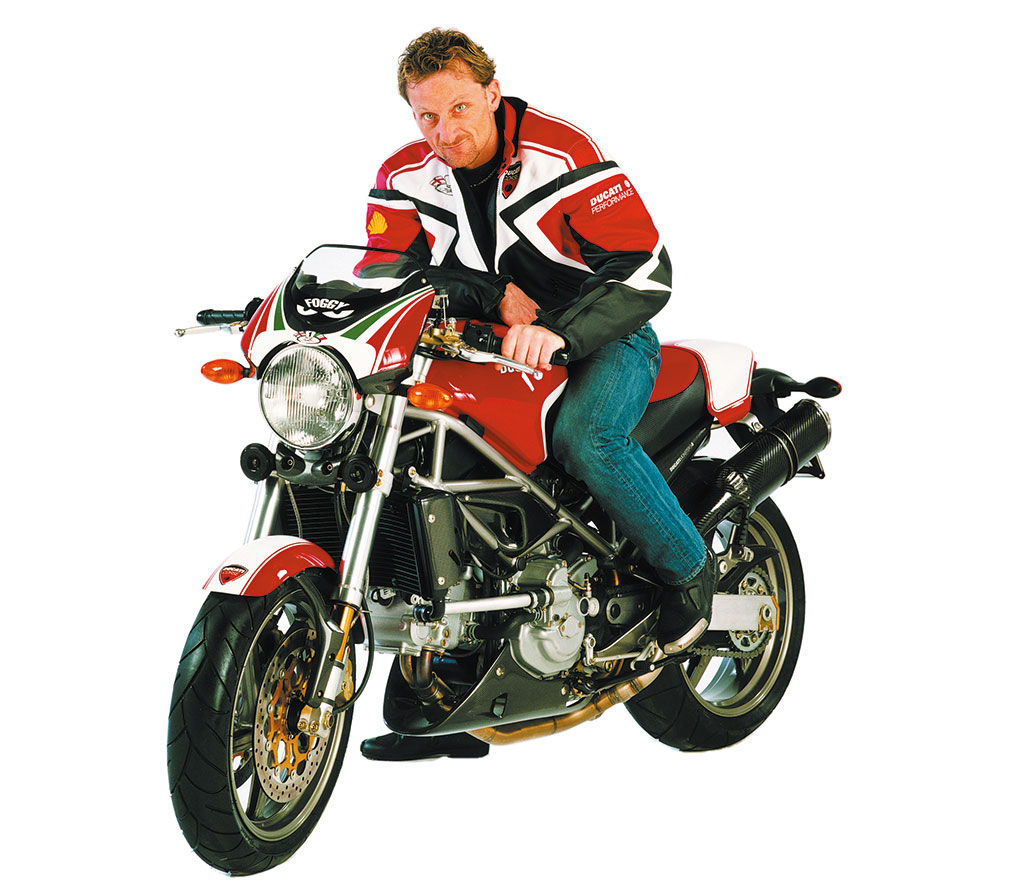
The handling and dynamic performance of the Monster benefited enormously,while the 2 valve versions of the 900 proposed to the public were in the same year limited
The Monster 620 i.e.
The 2002 range was, if possible, even more revolutionary, with the arrival of the 620 ccengine, in fact a depowered 750 with lower reaming cylinders and powered by electronic injection.
Proposed in the Base and S variants, the 620 offered quite high performance, in line with those of the 750, which in fact guaranteed only greater torque at the lowest speeds: this thanks to a rather pushed phase, increased valves (41 mm at suction and 35 mm at exhaust) and the new and more advanced engine control unit, the small and powerful Marelli 5.9.
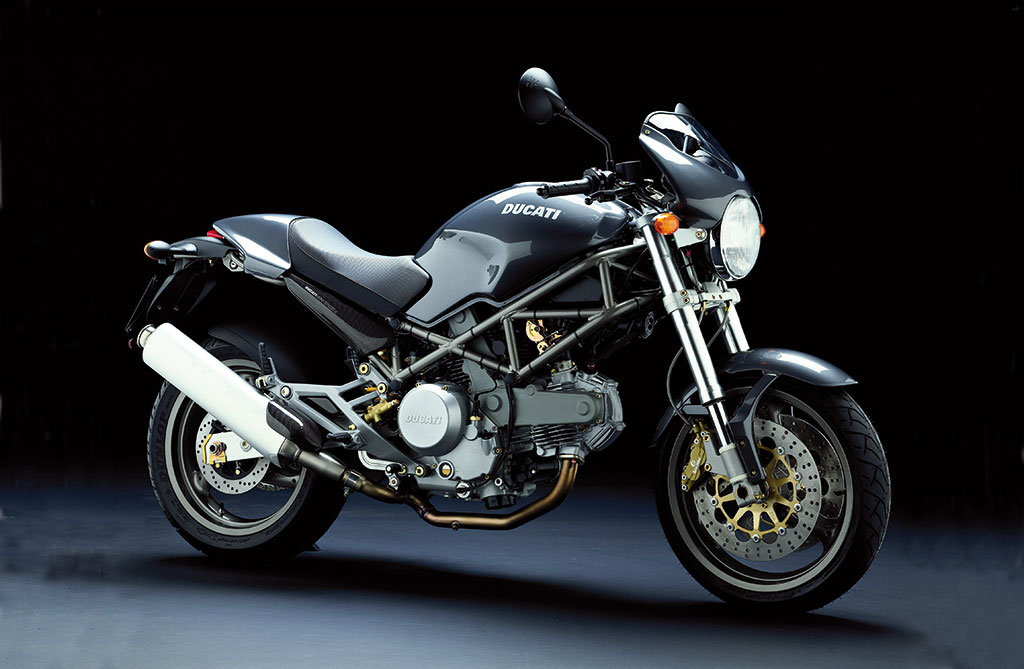
The S version proposed the aluminum swingarm,some carbon fiber details, the adjustable reaction rod at the rear, a higher saddle and the dome already seen on the 900.
The braking system was finally
Goodbye Monster 900, welcome 1000 DS
There were also major innovations in 2003: in addition to the 750, the legendary 904 cc engine disappeared, replaced by the
The availability of models essentially followed what was on the list in the previous year: Monster 1000 Dark, Monster 1000 Special (with aluminum swingarm, dome and carbon details), as well as an unusual and evocative return, the 1000 Chromium in limited series.
The new Monster 800 also makes an appearance which, in reality, more than as a replacement for the 750, proposes itself as an alternative to the 1000: the performance of the new engine, in fact, is equivalent to that of the old 900, also thanks to the new 6-gear gearbox (5 on the 750).
The Special version, as usual, offers some improvements such as the aluminum swingarm and the usual small dome. At the base of the range, the 620 is finally also proposed in dark version and the latter also in the SD (“single disk”) variant, to further contain the price. The dark family (all displacements) then includes the variant with matt silver coloring, which will support for some years the classic one in black.
Ducati Monster S4R
In 2004, the head of the family was replaced by a model intended to be the third major cornerstone in the evolution of the Monster.
That is, the M1000 S4R arrives,for enthusiasts only S4R. The engine was that of the ST4,that is, the 996 cc with lowered heads, slightly depowered (113 Hp) and equipped with a new exhaust system that would have distinguished the future aesthetics of the Monster.
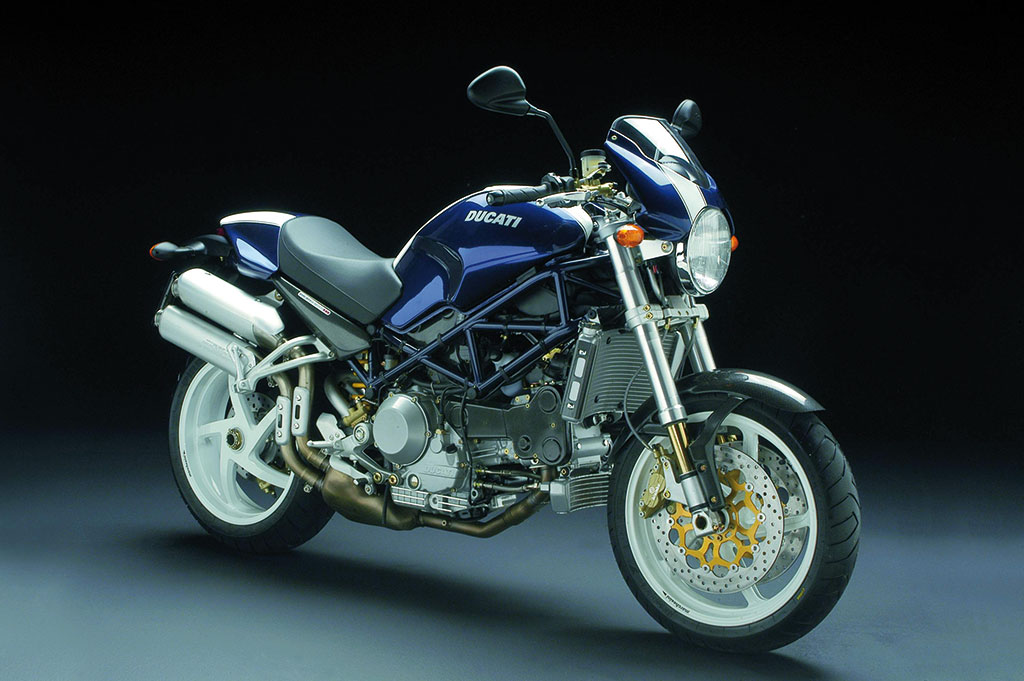
The single silencers on each side were in fact replaced by a small double silencer placedon the right side, where the cantilevered rear wheel supported by a beautiful single-arm swingarm in a traliccio of round aluminum tubes showed itself.
The equipment was embellished with the Showa fork with TiN treatment of the stems and a series of delicacies, including the abundance of carbon fiber details. The 1000 DS underwent no changes other than in the proposal of the models: in fact, the Dark disappeared to make room for the Base model, basically a painted Dark.
The 800 was also produced in the Base variant only in 2004. In the same year, then, the 620 receivedsome important improvements, mainly given by the adoption of the exceptional APTC clutch with torque enslavement and anti-slip function, coupled with the same 6-speed gearbox already present on the 800.
The 620 thus becamea truly valid model, although the selling price remained higher than that of the more direct competitors.
The Dark SD variant was proposed,also 620 cc and electronically injected, but without the APTC clutch and with a 5-speed gearbox (the normal Dark maintained the equipment of the Base model instead).
Two special versions of the 620 were also presented at the same time: the Matrix and the Capirex,a sort of replica of the Desmosedici rider.
The Monster S2R
In 2005, the only major innovation was the arrival of the Monster S2R:the 800 was definitively out of the scene and the same engine was then installed in the structure of the S4R, with rear mono arm and double side silencer.
For the occasion, the APTC clutch already present on the 620 was also mounted, while the front suspension was simplified with a Marzocchi 43 mm fork.
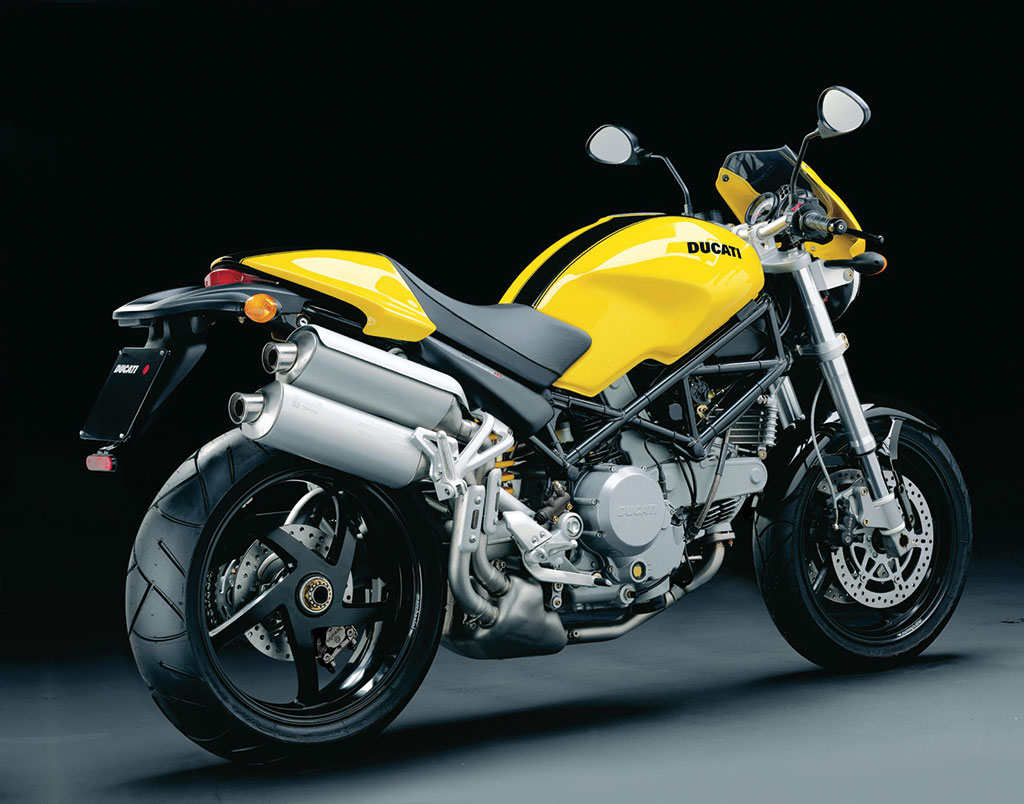
The braking system was curiously reduced to two 300 mm discs with two-piston floating calipers mortified by black coloring.
The yield was still good, but the efficiency of the classic 320 mm double disc with contrasting 4-piston gold calipers remained superior. The S2R was also proposed in the Dark version:the simplification was reduced to the coloring and assembly of a traditional handlebar instead of the variable section handlebar of the standard versions. The rear rim, on all S2Rs, was the same as the 5.5″ S4R, with a 180/55-17 tire.
The 620 cc series did not receive substantial intervention, but underwent a certain involution in the braking system, in fact the same as the S2R. Curiously, the SD version retained the 320 mm disc and the differentiated 4-piston caliper.
The Monster 400
At the same time an experiment was also attempted: always present for the Japanese market, the Monster 400was introduced, in limited series and at a particularly competitive price on the Italian market.
The set-up was that of the 620 Base, the gearbox was 6-gear and the power was about 40 horsepower,while the brake discs were the classic 320 mm discs, combined with gold series pliers.
The lack of success of the operation and the small price difference compared to the dark version of greater displacement confined the Italian M400 to the universe of motorcycle meteors.
Ducati Monster S4RS: the NarrowHead arrives
In 2006 the top of the range was revolutionized by the arrival of the Testastretta engine: the Monster S4RS.
Oltre al propulsore da
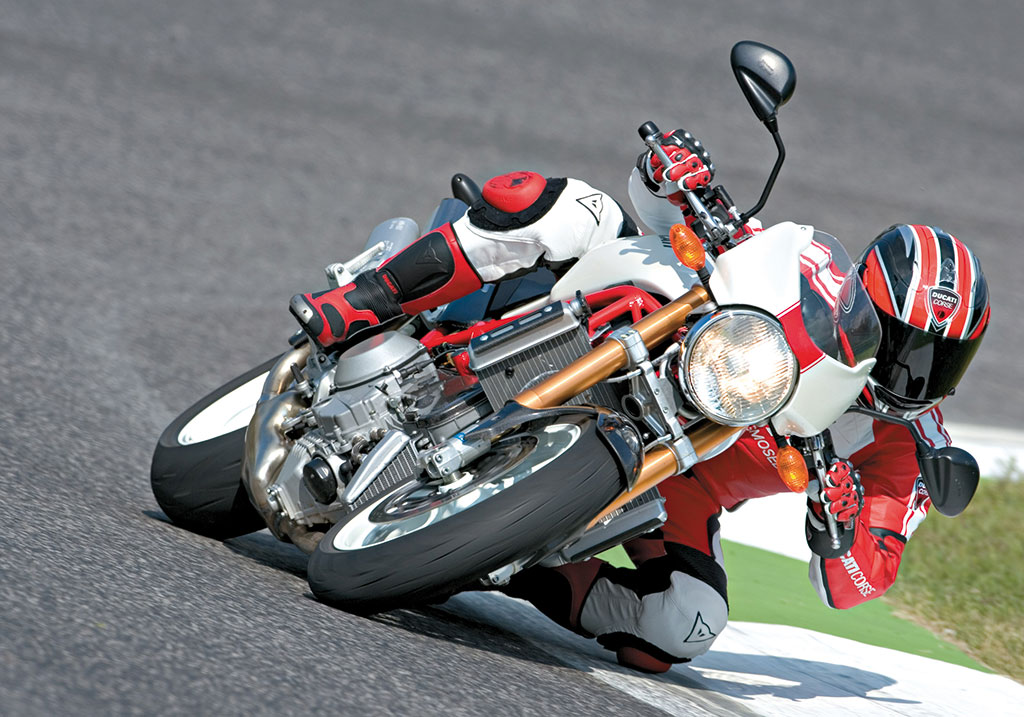
The excellence of the Monster was thus achieved: the Desmoquattro of 996 cc would remain in production throughout the year, to be gradually replaced by the S4R with a 998 cc engine and similar equipment to the predecessor, therefore simplified compared to the S4RS version. What’s more, the 1000 DS came out of the scene to be replaced by the S2R 1000,almost analogous to the 800 cc model, but equipped with an adjustable Showa fork and 320 front discs with 4-piston calipers. The only variant still faithful to the original forms remained the 620, in the basic and dark declinations.
Monster 695
However, in the spring,
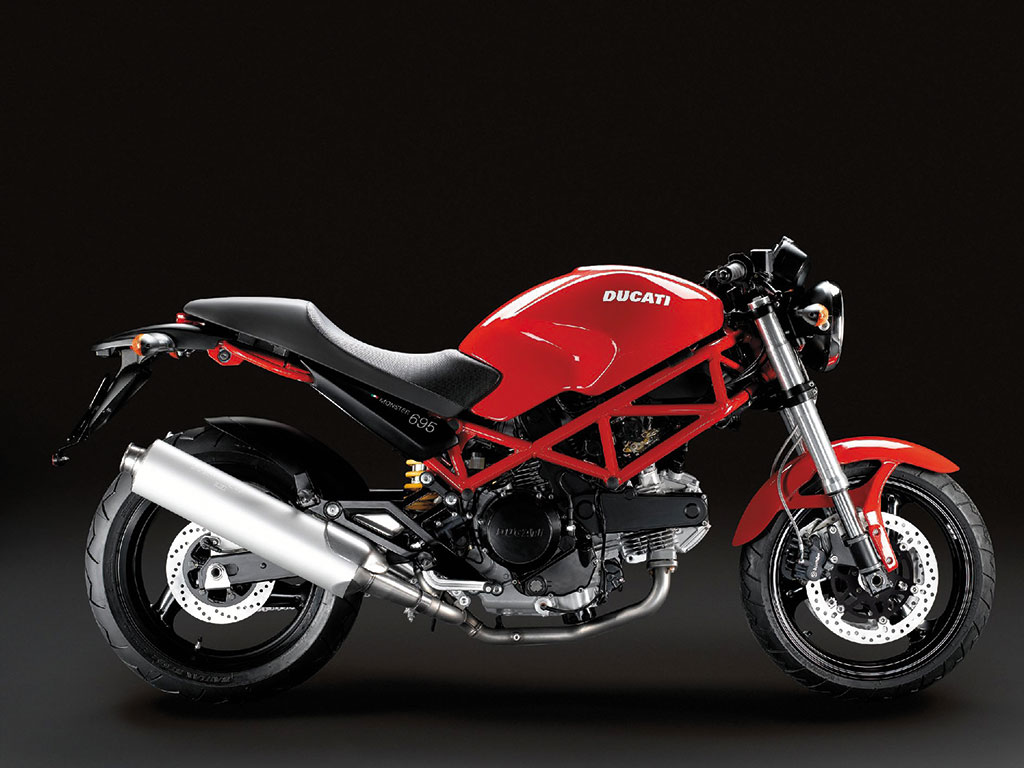
We have therefore arrived at 2007: now of the old desmodue and desmoquattro thrusters, only the memory remains. The base of the range is the powerful and reliable 695, destinedto go down in history as the last Monster with traditionalcycling, while those who want something more can choose betweenthe S2R of 1000 or 800 cc,the latter still possibly proposed (like the 695) in the Dark set-up. At the top of the range remain the Monster S4RS and, for the most demanding,the S4RS Tricolore,characterized by a coloring inspired by the Italian flag and an even richer equipment than the standard model. At the end of 2007, therefore, a cycle seems to end with the arrival of Monster 696, the first real formal revolution in 15 years. The future of this model, in fact, is still to be written.
The second part of the article was supplemented by the drafting of cuoredesmo.com.
Monster 696
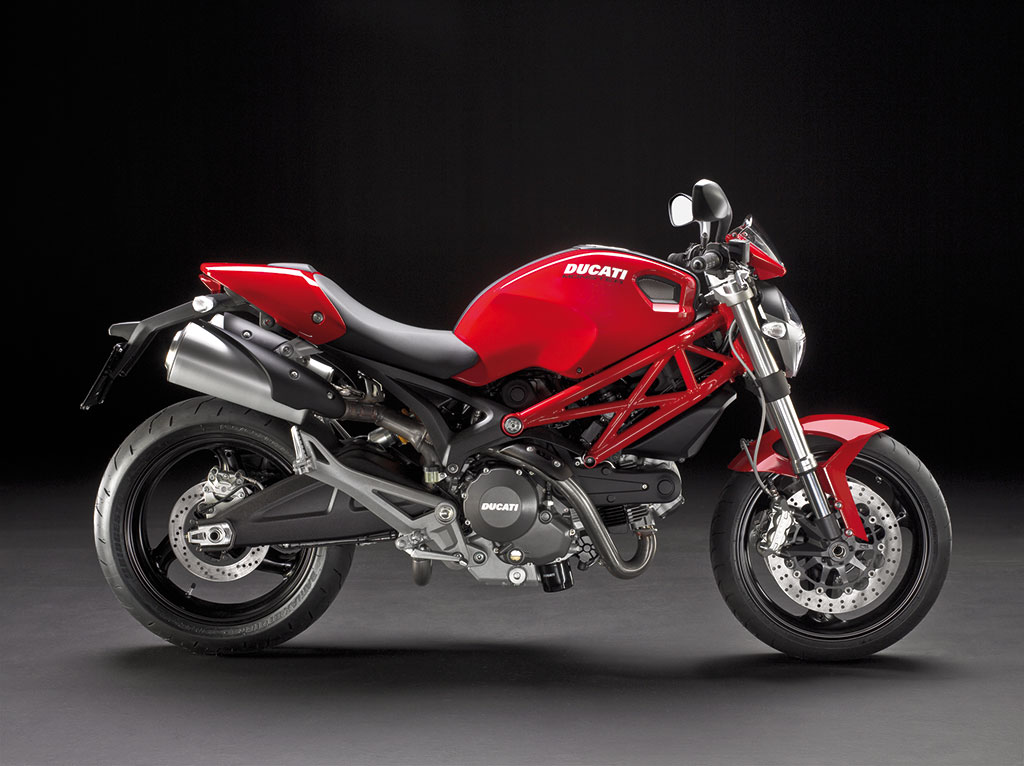
In 2008 Ducati decided to give new life to a product that, 15 years after its release, had not undergone substantial changes in the line and suffered competition from other homes in the naked sector.
With the
Monster 696
Ducati tried to achieve two difficult results: to age the design of the bike without depriving it of monster identity and to propose an even easier and more manageable vehicle, but with an eye to performance. Not an easy job.
Symbol of this work was undoubtedly the tank that hid different technical solutions and housed the famous interchangeable covers.
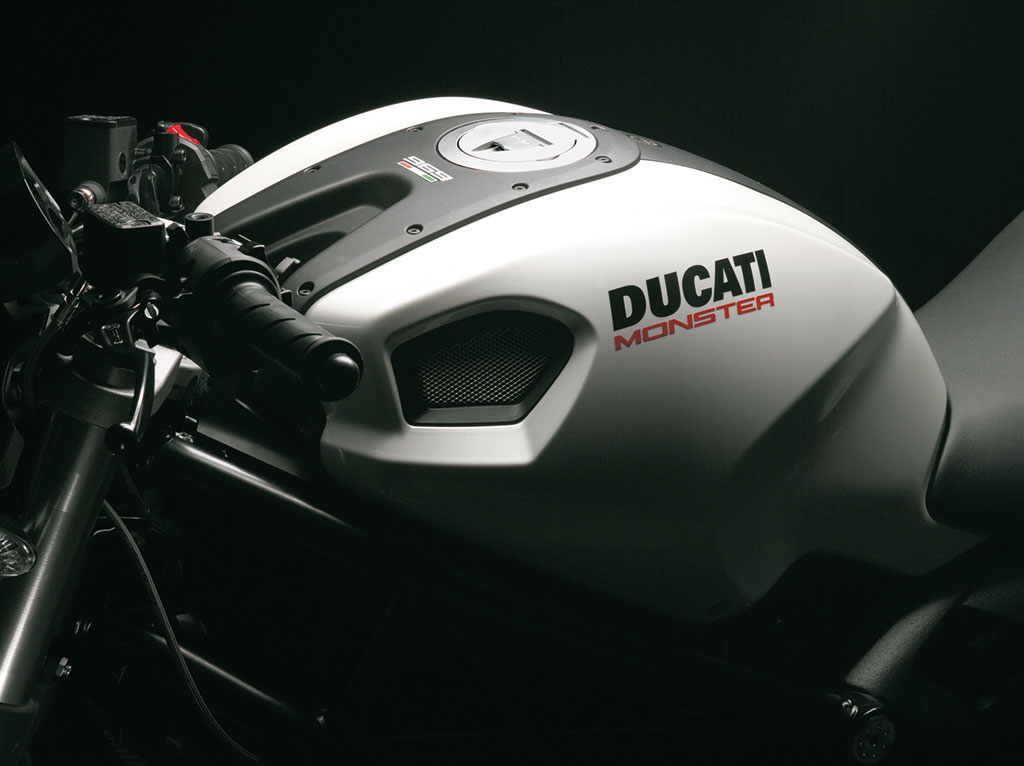
As for cycling, the steel tube structure combined with an aluminum alloy rear frame. To embellish the suspension, here is a 43 mm Showa fork, and an adjustable Sachs mono.
Other novelties in affected the swingarm and steering plates.
The 696 introduced a triple parabola projector instead of the classic headlight, new rear-view mirrors, and a revised exhaust system in size and placement.
The digital instrumentation is backlit and multifunctional.
The Monster 696 offered 80 hp of maximum power (10% more than the 695) and the APTC clutch, with anti-slip function.
Monster 1100
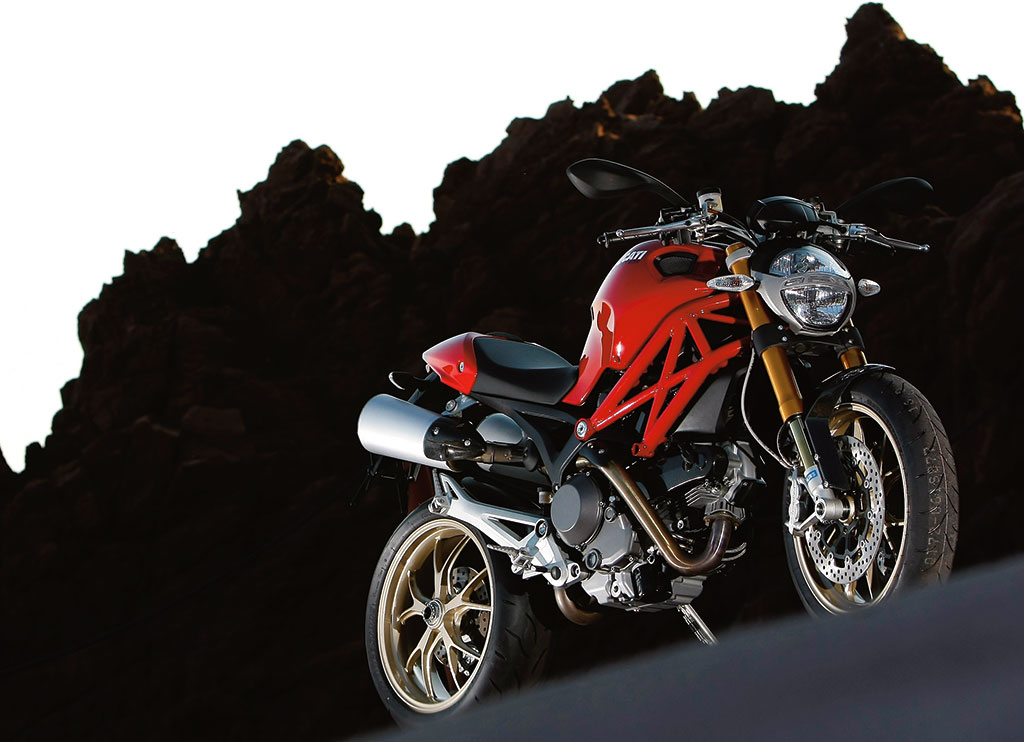
The 696’s older sister is the Monster 1100. The two bikes look a lot like each other, but they are not twins. In terms of performance, the difference is, in terms of power with 95 Hp against 80 of the 696 and torque, with 10.5 Kgm at 6000 rpm for the 1100, against 7 Kgm at 7750 rpm for the little sister.
Between the two Monsters there is also a substantial difference intrim, due both to the setting of the suspensions,and to the different rubbering.
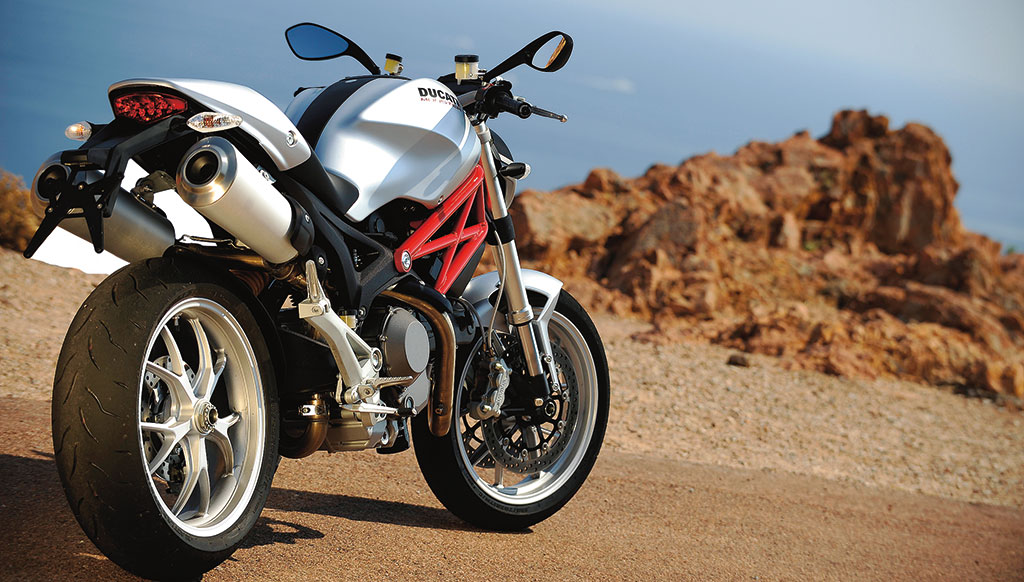
The 1100 then mounts the single-arm swingarm, which clearly characterizes its rear. The fork is Showa with fully adjustable 43 mm inverted stems and the Sachs shock absorber adjustable in spring preload and hydraulic brake. The S version mounts fully adjustable Öhlins.
Compared to the 696, the 1100 pays for the absence of the standard APTC clutch and the normal extra kilos due to the different muscle mass.
Monster 796
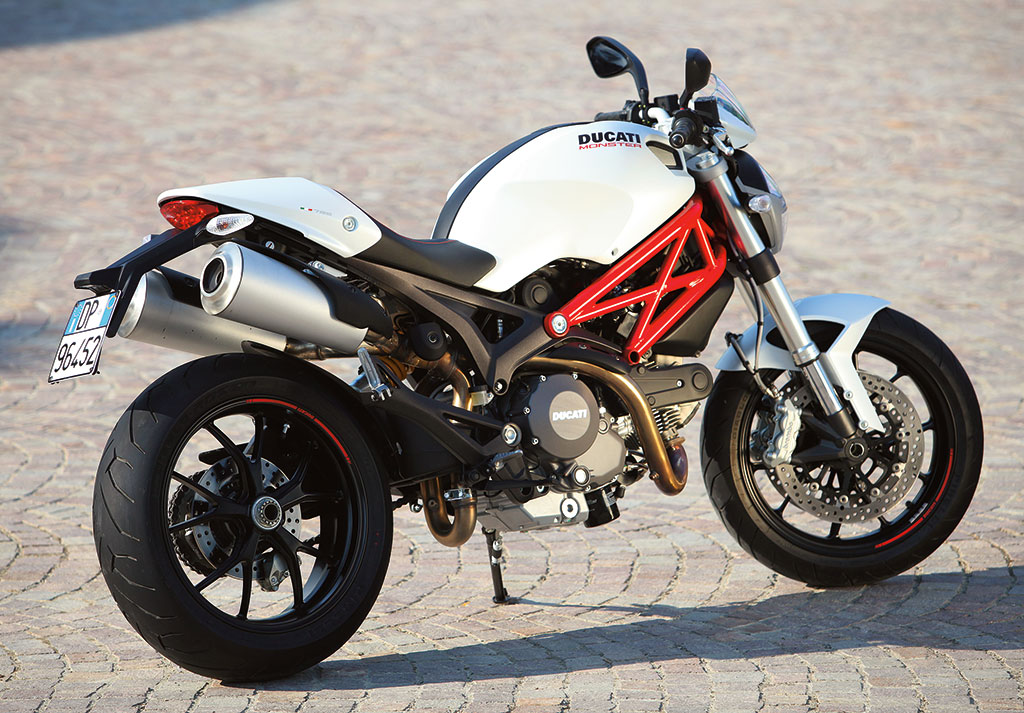
The 796 is located between the 696 and the 1100, trying to take the best of the two models. It has the single-arm swingarm of the model with over a liter of displacement, the APTC clutch as the 696.
On the mechanical front, the air-cooled two-valve engine delivers 87 Hp at 8250 rpm,with a maximum torque of 8 kgm at 6250 rpm (1 kgm more than the Monster 696). Unlike the small displacement Monster, the 796 also includes the presence of the oil radiator.
The braking system is Brembo,with two 320 mm front discs combined with radial calipers with four pistons and a 245 mm rear disc with two-piston calipers. ABS is optional.
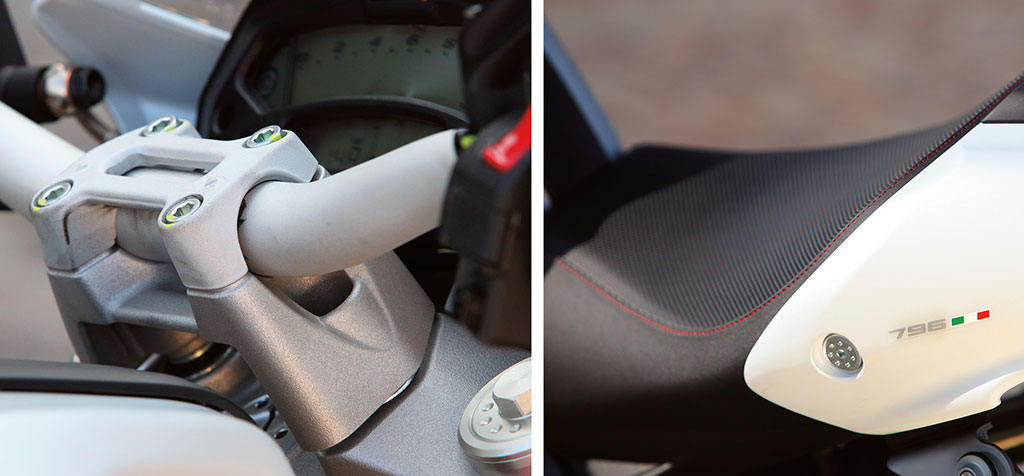
A balanced bike that offers an excellent torque-to-weight ratio, but that lends itself to criticism with regard to the fork (Showa with non-adjustable 43 mm stems), tends to be too rigid. The mono is a Sachs adjustable in spring preload and hydraulic brake in extension.
Monster 1100 Evo
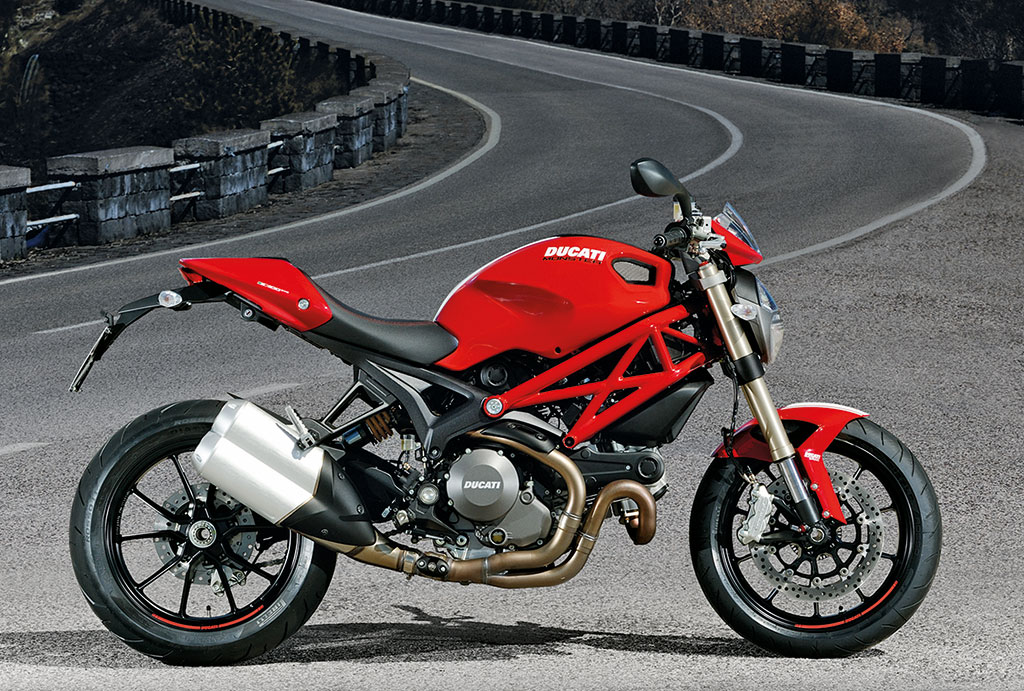
The two-valve twin-cylinder with air cooling mounted on the Monster 1100 Evo
is the most powerful ever installed on a ducati standard for the time, with 100 Hp at 7500 rpm (5 more than the previous version) and 10.6 kgm of torque at 5750 rpm.
The idea behind the 2011 model, which completes the family together with the 696 and 796, is the exaltation of sportsmanship.
Compared to the previous model, the Desmodue 1100 Evo has only one candle per cylinder, with a view to simplifying the engine. New pistons and the lighter flywheel derived from that of the 848.
The clutch is in oil bath,and with anti-slip function.
The new exhaust system has a type 2 in 1 in 2 layout, with the manifolds and the double terminal on the right side and differs from the smaller sisters, returning to the aggressive look of the monster S2R and S4R.
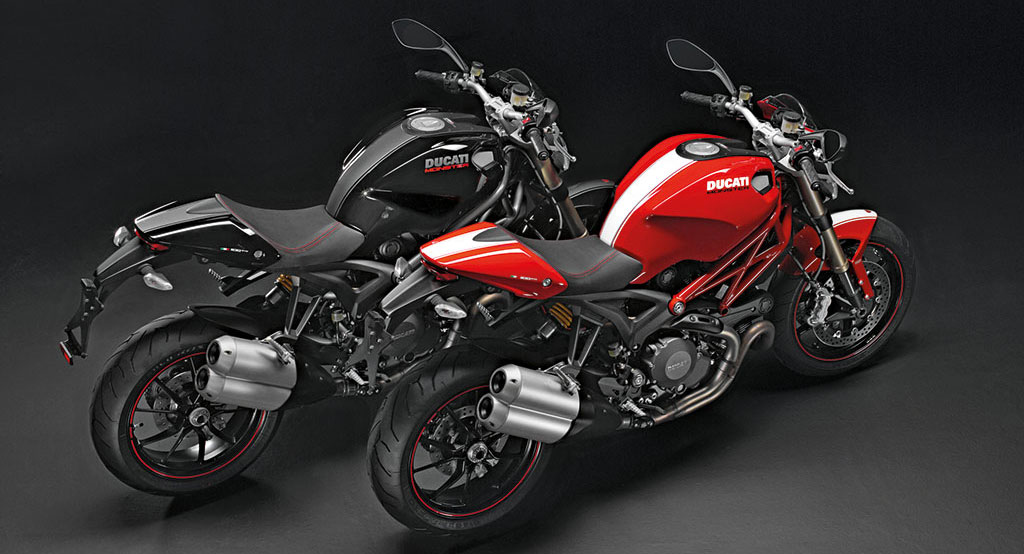
On the suspension front, the fork is a fully adjustable 43 mm Marzocchi, the shock absorber is the usual Sachs adjustable only in extension and spring preload.
The braking system consisted of a pair of
Monster 1200
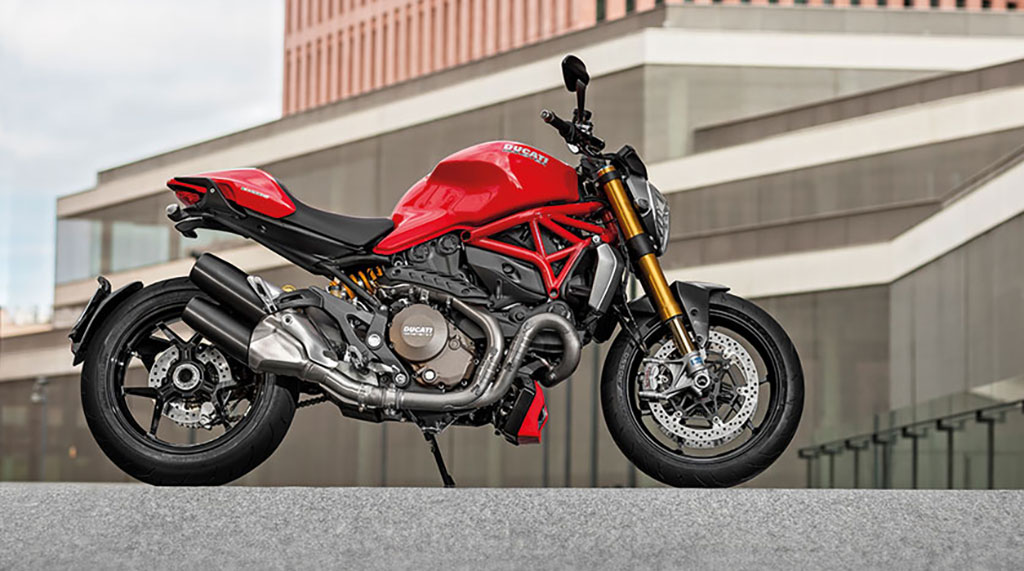
It’s 2014. With the new Monster 1200 Ducati tries to get closer to the lines of the historic and glorious model, while having to deal with binding technical choices. The first is the engine:
However, the proportions are reviewed and the M1200 is now more compact in size, a sporty look and a more sleezy line, thanks also to the tank that loses its covers and regains the classic hook that recalls the first version of Galluzzi.
The tail of the bike is supported by a steel frame that also serves as a support to the passenger’s platforms, finally free from those of the rider. Below we still find the single-arm swingarm, with a new, more compact design.
The clutch is oil bath with anti-slip function, the exhaust is of the type 2-1-2.
As for the suspension, the fork is a 43 mm Kayaba, the mono a Sachs adjustable only in preload and extension. The S version includes suspensions entirely Öhlins,fully adjustable.
The instrumentation is TFT in color and has a display with three different screen modes that allow you to customize the display of data.
Monster 821
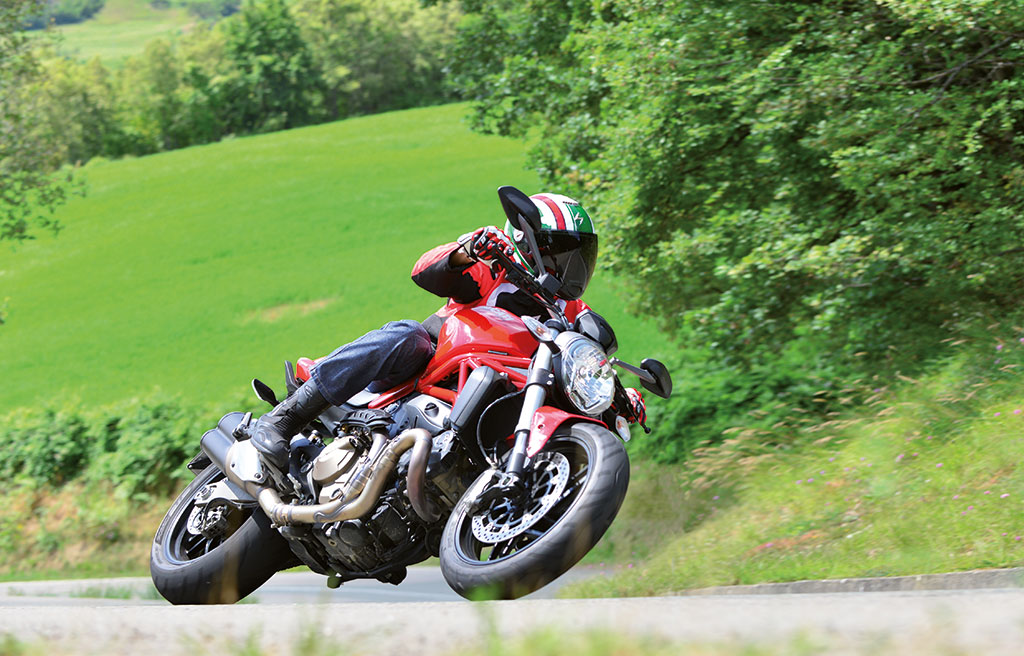
After the launch of the 1200 cc version,the new Monster family had to expand the target of potential customers with a lightweight, compact and affordable bike. Here is the Monster 821, which speaks to a less extreme audience in terms of performance, but maintains stylistic characteristics (apart from the swingarm).
Compared to the Monster 1200, the wheel length was “shortened” by 3 cm, for a total of 1480 mm and the rear tire is 180/60 against the 190/55 of the older sister.
The bike is therefore more manageable and less demanding, although it remains brilliant: the narrow head develops a maximum power of 112 Hp at 9250 rpm,while the torque is equal to 9.1 Kgm at 7750 rpm.
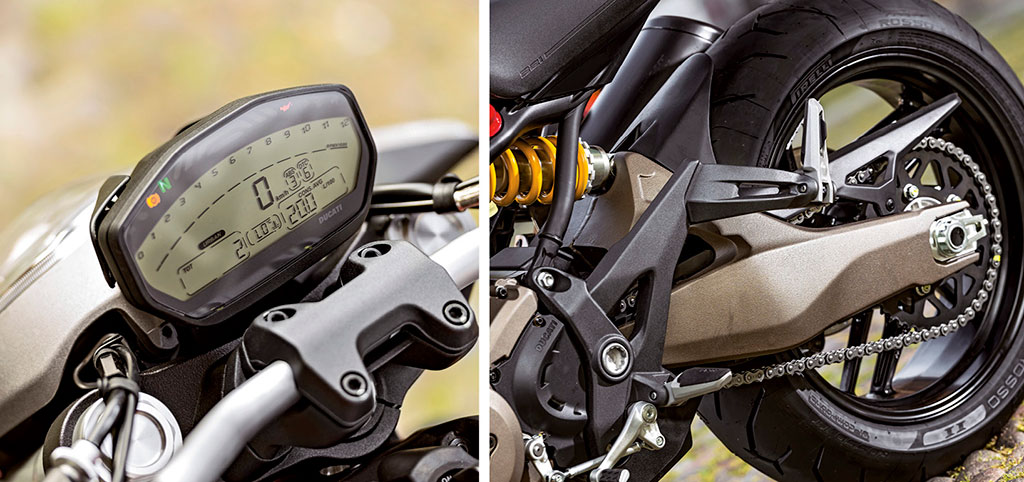
For cycling, the most important novelty is the two-arm swingarm made of aluminum casting. The Sachs shock absorber is adjustable in the spring preload and hydraulic brake in extension, while the fork is with 43 mm inverted stems without adjustments.
The braking system consists of two 320 mm front discs with 4-piston single-block Brembo calipers equipped with radial attachment and a 245 mm rear disc with two-piston floating caliper,while the 10-spoke rims have a similar design to that of the Panigale.
The type 2 in 1 exhaust system with split silencer, has a different cut than that of the monster of greater displacement, while the clutch is the already proven MULTI-disc APTC in oil bath equipped with anti-slip device.
The instrumentation includes an LCD display, instead of the color TFT dashboard of the 1200.
Monster 797
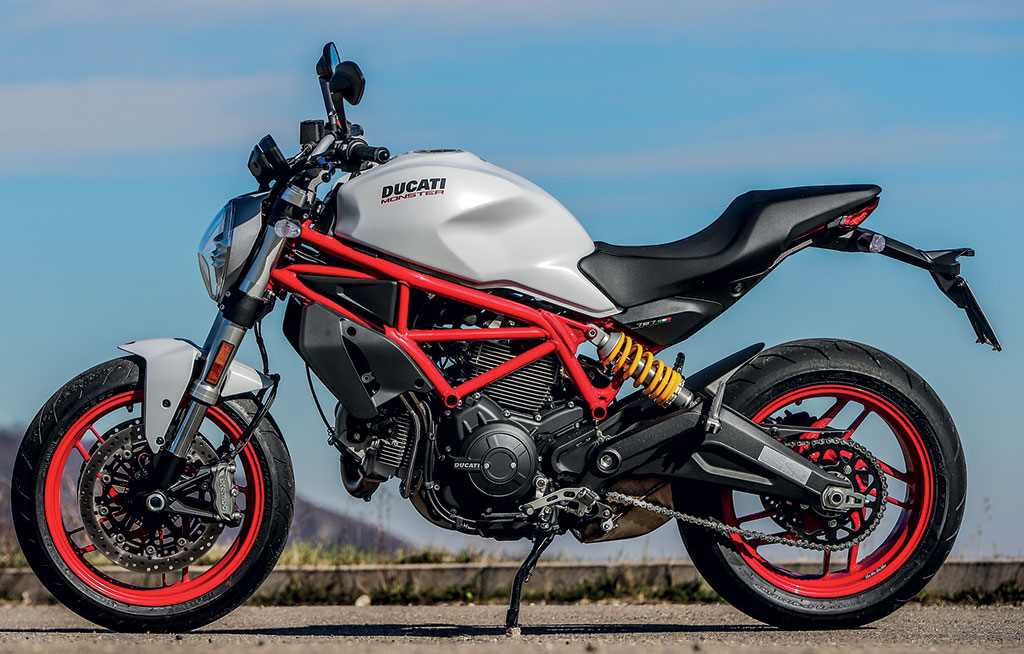
The Monster 797 is a reference to the origins, as demonstrated by the tank, the slit frame, as well as of course the air-cooled twin cylinder.
On the Monster 797, the frame is back in one piece, from the cannotto to the tail, including traditional tube passenger handles. The rear suspension sees an adjustable Sachs shock absorber in the spring preload and in extension placed on the left side of the bike connected without progressive lever to the frame and swingarm. The wheels, with ten spokes, are made of light alloy.
The engine that equips the new Monster 797, characterized by characteristic measurements of 88 x 66 mm, derives essentially from that of the 796, although improvements have been made to make the acceleration even sweeter and to expand the torque curve.
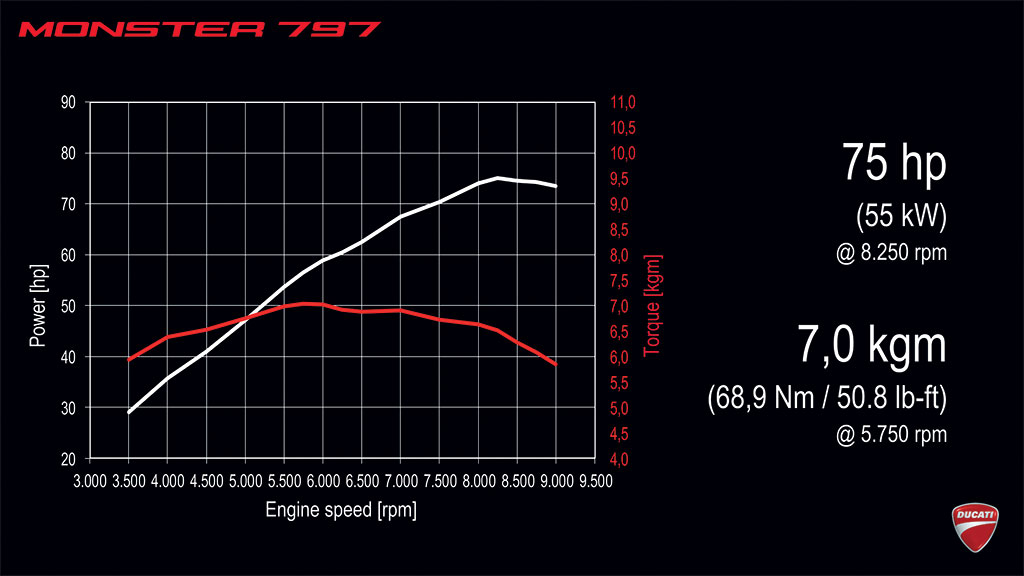
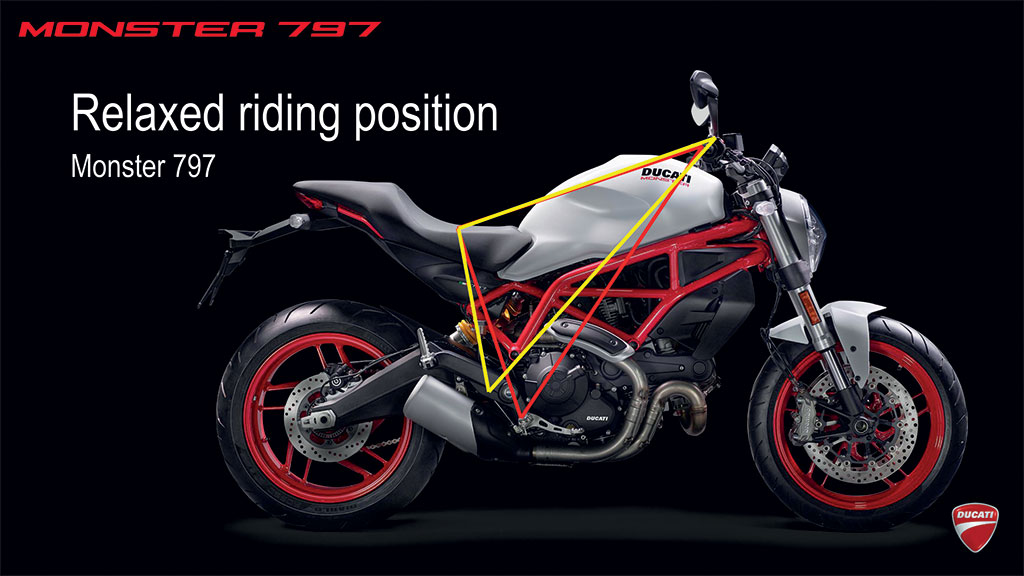
Compared to the engine of the Monster 796, which delivered 87 hp, the 797 was forced to sacrifice something in terms of maximum power to re-enter the Euro 4 homologation, so much so that it develops 75 hp at 8250 rpm. Torque also decreased, from 78 Nm to
The Monster 797 comes without electronic aids such as traction control, Riding Mode, anti-surge systems or the like, and the only device that supports rider controls is the Bosch ABS.
The 797 is very comfortable to drive, has the platforms lower and forward than the Monster 821, as well as a handlebar with a different handlebar (higher and backward), which gives the rider an almost perfectly erect torso position.
The non-adjustable Kayaba fork with 43mm inverted stems has a rather stiff setting, but still offers good feedback on what happens under the front wheel, while the adjustable Sachs shock absorber in spring preload and extension has a sometimes too harsh response, especially on a series of holes in succession or on the ripples of the road surface.
For the most demanding there is also the Monster 797 Plus, which also includes seat covers and dome.
Ducati World Archive Photo – Ducati
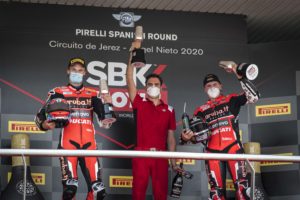
SBK a Jerez: avanti tutta!
A Jerez de la Frontera, seconda tappa del campionato SBK, si ri-accende lo spettacolo con Ducati protagonista. Doppietta di Redding e secondo posto in gara 2 per Davies.
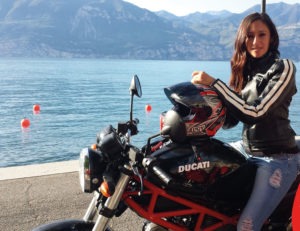
Spirito Libero: Eleonora e il Monster 695
Dicono che le donne scelgono il Monster perché è molto semplice da usare. Per quanto mi riguarda è stata più una questione di innamoramento.

